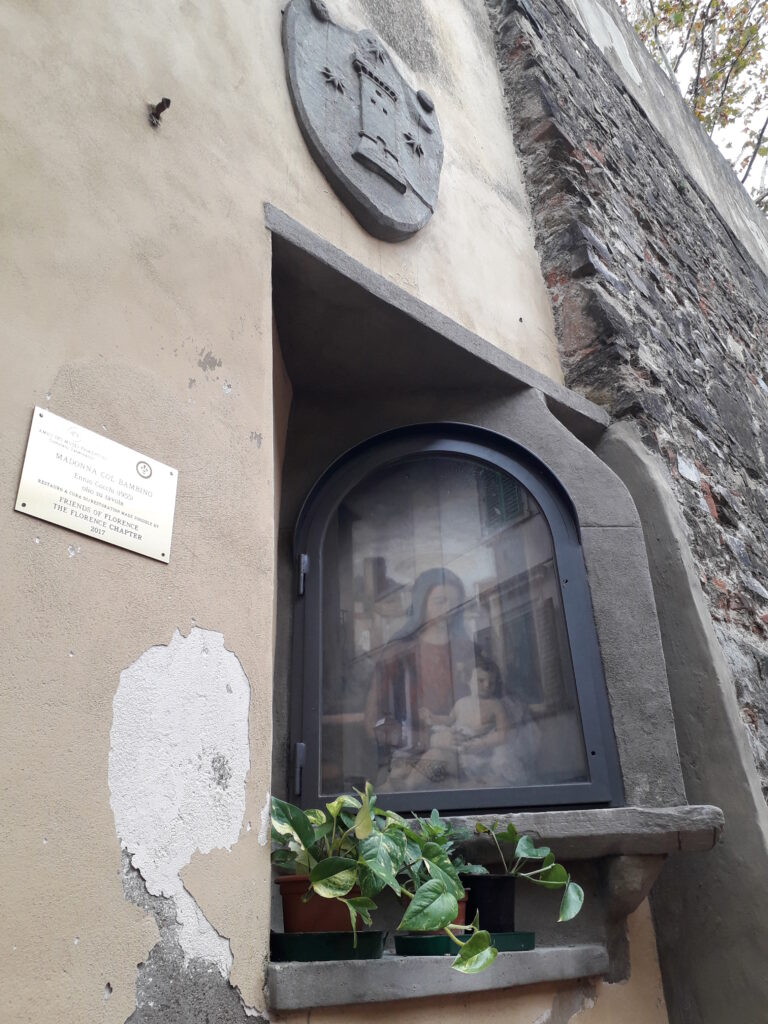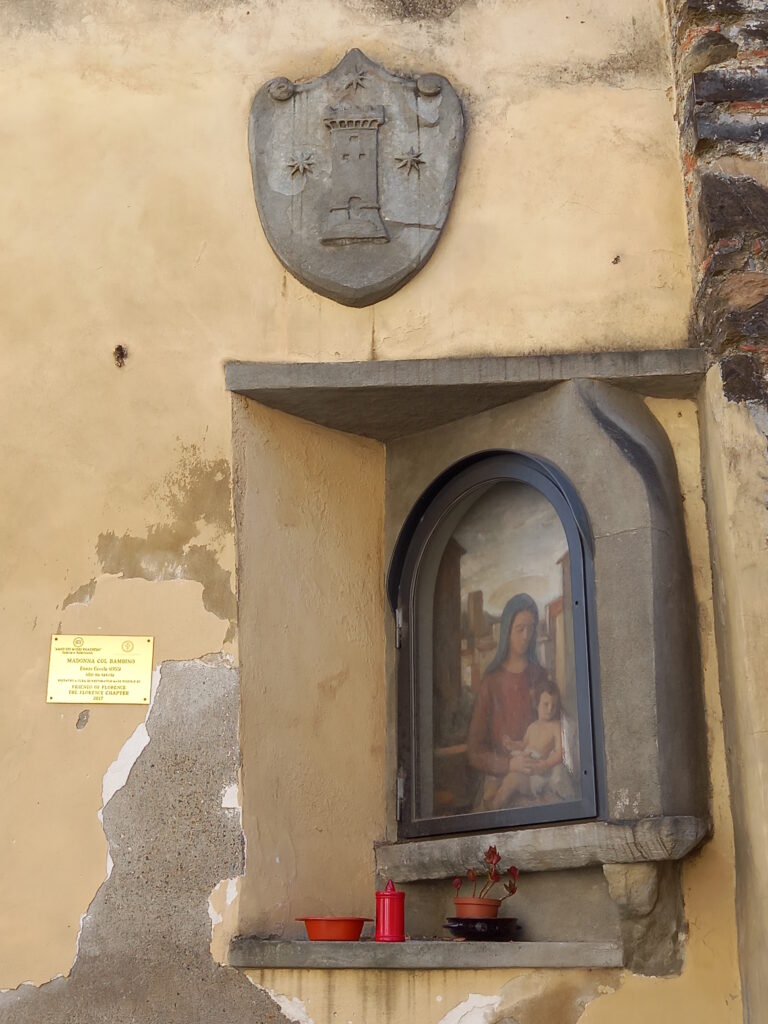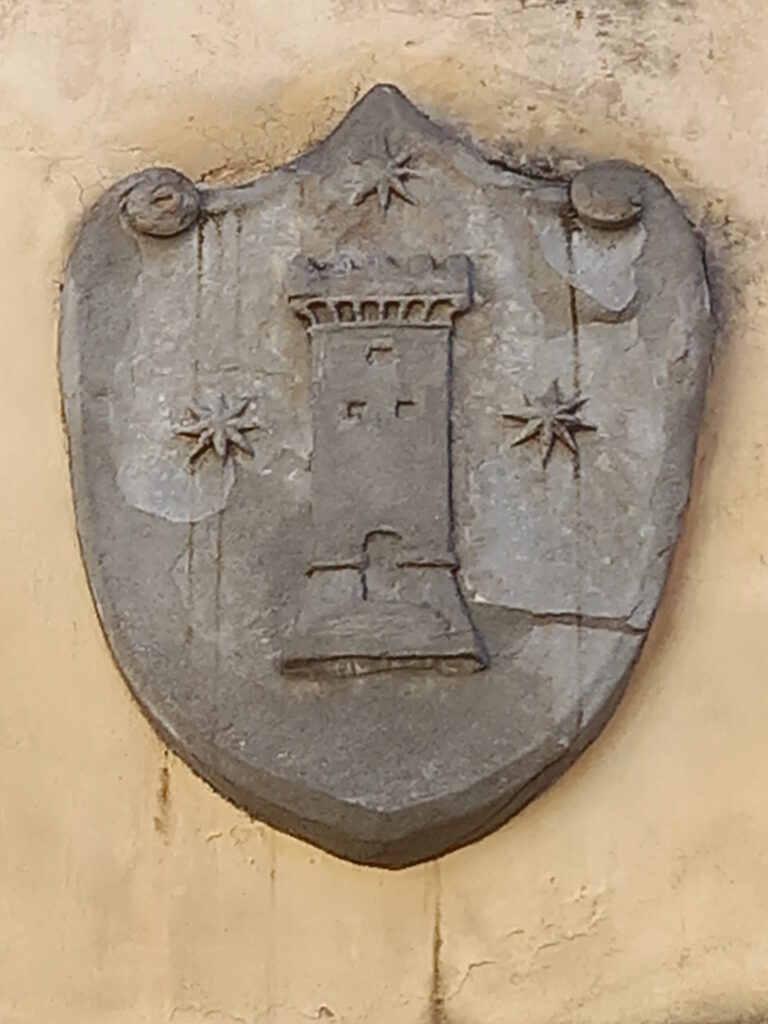Via del Campuccio
the tabernacle of florence
THE TABERNACLE
Madonna col Bambino
An effigy of a Madonna, seated with the Child in front of a window, is depicted. Beyond the opening, the dark silhouettes of two buildings guide the gaze farther, toward the panorama of the city: a Florence made up of houses, towers and palaces with volumes of bare geometry, crowded in the alternation of heights and faces in light and shadow, giving back the idea of a dense web of stories and History. The painting, conducted with rapid brushstrokes, imprints form by additions of touches of color, using a chromatic range of lowered tones; only in some places, as in the Virgin's mantle, are lines engraved in the pictorial material glimpsed to mark a outline of the figures. Ennio Cocchi left his signature on the panel, included in the shape of the basin placed on the left on the same plane on which the Virgin sits.
Tabernacle
The tabernacle, with its pietra serena frame supported by corbels, is bizarrely set at an angle, probably due to changes in the pre-existing masonry, in the wall that rises along Via del Campuccio to enclose the historic Torrigiani Garden.
THE STREET
Via del Campuccio
The street extends from Via Romana to Piazza Torquato Tasso. It was originally divided into shorter sections: the first, up to Via de' Serragli, had the name Via San Giovanni, the second Via San Benedetto and then Via della Pergola. The name under which it was later unified probably retains the memory of the vegetable gardens and lands owned by the Camaldolese of the nearby monastery of San Salvatore (see at Piazza Torquato Tasso). The street retains a popular residential character, with many buildings marked by coats of arms and cobblestones that refer to ownership by religious institutions.
AUTHOR
Ennio Cocchi
(Florence, September 16, 1915 - Pisa, August 25, 1987) The young Cocchi began his training in the studio of the engraver Emilio Mazzoni Zarini; later he was a student of Gianni Vagnetti at the Porta Romana Art Institute and finally attended the Accademia di Belle Arti, graduating in 1937. In the same year he held his first solo exhibition at the Lyceum - historic and prestigious venue in Florence that, for example, had hosted the first Italian exhibition of Impressionists in 1910 - and participated in important group shows, finding himself exhibiting with figures such as Carena and Capocchini.
The artist
(Florence, September 16, 1915 - Pisa, August 25, 1987) In 1940 the Modern Art Gallery of the Pitti Palace had already forfeited two of his paintings, Still Life (1936) and Country ( about 1940); after that acquisition there were no further entries of his works into the gallery, and one would have to wait until 1983 to see one of his Self-Portraits enter the Uffizi collections. One of the best-known works of this Florentine artist is undoubtedly the long undertaking of decorations for the Antella Monumental Cemetery, which since 1980 saw him involved in the creation of 35 mosaics. Ennio Cocchi's last years were thus devoted to decorating the cemetery, where he finally found burial in 1987.
Tibdit
The restoration revealed, contrary to what had hitherto been believed, that the work consists of an oil painting on panel, a rather unusual choice for a tabernacle.
GALLERY

Tabernacle
Via del Campuccio

Tabernacle
Via del Campuccio

Emblem
Via del Campuccio, Torrigiani Gardens



